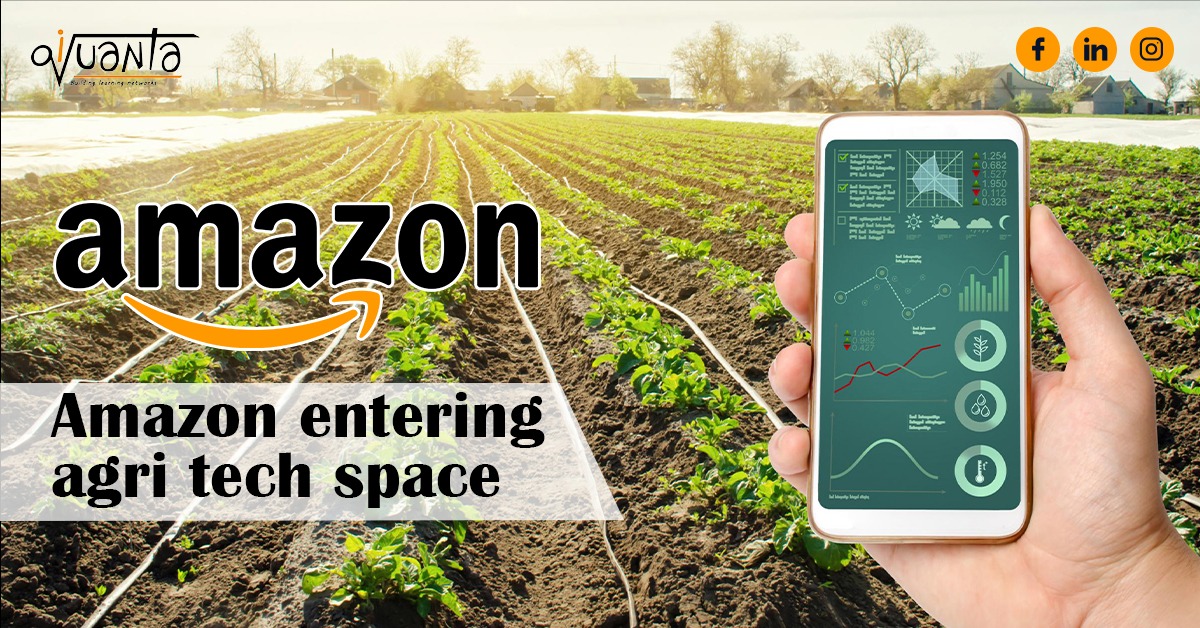Amazon is planning to enter the agri-tech space. They have begun offering real-time advice and information through a dedicated mobile app to help farmers make decisions on crops and even deploy machine learning technology. This program is called Amazon dubs Reactive and Proactive Crop plans.
The final plan is to provide farmers with cutting-edge technology and insights such that they can improve their yields and make more money.
Currently, the presence in agritech space is minimal by e-commerce players and there is a lot of potential especially after Covid as people are preferring organic things.
Hence, the plan is to deliver fresh produce to the doorstep. Although the market for this has always been noticeable, there have been many challenges due to which no progress was made in this sector.
The biggest challenge for agricultural produce is seasonality. Products won’t be available throughout the year which needs to be managed efficiently on e-commerce platforms.
Most crops aren’t grown throughout the year. There is a dedicated window for sowing and harvesting which has to be followed accurately.
If the harvest is plentiful, there is no cause of worry. There’s enough produce going around and nobody has to worry about supply disruptions.
The problem comes during the lean periods when one has to wait for the next harvest to come through. We have to deal with shortages at that time which can lead to inflation too. The best solution for dealing with this issue is to build storage facilities.
If produce is not stored, there will be a high chance of mismatch in demand and supply and if this mismatch is not taken care of there will be trouble fulfilling customer orders.
This problem is more apparent when dealing with perishable products like fruits and vegetables , something which Amazon is working on for a while.
Before dispatching the produce to processing centers, Amazon has to inspect and monitor quality at various stages and ensure that the produce stays fresh throughout this journey.
Amazon’s fulfillment centers operate with 4 separate temperature zones (ambient, tropical, chilled and frozen) to maintain the quality and freshness of produce.
Now the storage and cold chain infrastructure can help for some time. Running this business at scale comes with other challenges too.
We have to talk to the farmers frequently. There should be agreements in place to produce and supply fruits and vegetables of the desired quality. The problem is that even the best farmers may not be able to follow through with their promise of quality.
There are many external factors involved too when talking about quality. It depends on monsoons, pests, droughts, and other such factors. So if we want to predict both the quality and quantity of the produce, then we have to partner with farmers as they head into the sowing season.
We have to give them quality seeds, advise on best practices, and maybe even finance their operation. Sometimes, hand holding is required during rough monsoons and dry weather. They have to be trained properly for us to ensure getting the right quality.
Amazon wants to dominate this sector through their Amazon Fresh offering. But to be able to succeed, they have to fix the broken supply chain wherever required. They’ll have to work closely with farmers, other intermediaries, and even the government.
So while the mobile app may be a good place to start, Amazon can only make meaningful progress once they address all the challenges that lie with this business.
To structure your CAT online preparation in an efficient way consider joining iQuanta which is a top online cat coaching institute and being a part of the iQuanta CAT 22 Course.
You can also check out and be a part of their Facebook group for peer learning, doubt solving and free material.
For 24*7 doubts-solving, FREE guidance and counselling and peer to peer learning, join the CAT preparation Fb group below:







